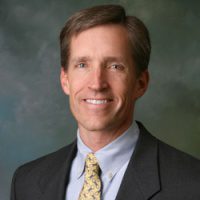ReEngineering the Engineer: Why Not Dream Big?

When I started my company several years ago, I decided to play the “I need to be close to home” card. Instead of commuting 20 miles to Charlotte, N.C., every day, I found some office space close to our home. I was pretty sure I’d be spending a lot of late nights at the office, and I didn’t think trying to drive home from Charlotte late at night (or early in the morning) was a particularly good idea.
If I felt that not being “downtown” was jeopardizing my business, I could always uproot the office and look for something in Charlotte. Fifteen years later, I’m still about a mile and a half from our home.
Benefits of a Commute?
No one would argue a five-minute commute is a bad thing, particularly here in Charlotte, but I enjoyed the time on the road listening to NPR or news talk or the business stations. More times than not, I actually learned something outside my field of expertise on the way to work.
These days, I hardly have a chance to listen to an entire song on the way to work. And when I have meetings in Charlotte—which isn’t as often as it used to be—my mind usually is cluttered with things yet to be done, problems needing to be solved or thoughts about where the company should go. So rather than listening to “talk radio,” I find myself locked onto a radio station that’s just background noise.
However, I found myself in the car most of Jan. 21, 2019, which was Martin Luther King Day. About midway through the day, I realized I was hearing a song for at least the third time since that morning. It was a unique song, which was why it caught my attention. I heard it two more times that afternoon. I noted the artist and went home to do a little research.
Words to Live By
The song, “What the World Needs Now Is Love,” was a 1971 Billboard charts No. 8 hit by Tom Clay. It’s a medley of sound bites from speeches and live radio coverage related to the assassinations of John F. Kennedy, Martin Luther King and Robert (Bobby) Kennedy. There was a particular part that resonated with me. It was Bobby Kennedy’s eulogy—given by his brother Edward—and recounted how Bobby often quoted George Bernard Shaw, saying “Some men see things as they are and say ‘Why’? I dream things that never were and say ‘Why not’?”
It seems most people are just doing the same thing, over and over again, putting one step in front of the other every day. Perhaps there’s something to be gained by stopping to reflect on what we’re really doing and where we’re really headed, as engineers and engineering firms.
Our industries—both the design and construction side—are burdened by processes and ideas rooted in the way things were done years ago. There’s certainly a large element of that based on what and how we were taught as we came up through the ranks. “This is how it’s always been done” has been said more times than I can count, even in our office.
Software has made our analytical lives significantly easier through the years. Long gone are drawn-out hand calculations and moment-distribution methods … thankfully. Technology has enhanced how we collaborate together, communicate and visualize our work months before a shovel ever hits the ground. But although these enhancements to how we work are extremely beneficial, they’re not what George Bernard Shaw and Robert Kennedy were driving at.
Change the way you think. Don’t focus on what is; but instead have the curiosity to wonder what could be.
Challenging the Status Quo
It’s not enough to understand why things are the way they are; think outside the box and positively change the way they’re done. SidePlate, for example, developed a better mousetrap for high and low seismic applications. Through forensic studies after the 1994 Northridge earthquake, they saw shortcomings in current seismic connections and envisioned a different connection that solved inefficiencies as well as significantly improved upon them. That single innovation changed the way we offer solutions to our clients, particularly here on the East Coast.
Engineers don’t need to wait for a natural disaster to start looking for ways to better our profession. There are opportunities everywhere; you just need to look around. Look at your work habits, your firm’s processes as well as the bigger picture of how we build buildings and how we, as a profession, can better contribute to that process. We need to come out of our shell and be a larger part of the construction process—not just a “necessary evil.”
Change the way you think. Don’t focus on what is; but instead have the curiosity to wonder what could be. When you start thinking differently and asking yourself better “what-if” questions, you’ll be amazed by what you come up with.
About Douglas Fitzpatrick
Douglas G. Fitzpatrick, P.E., is the founder, president and practicing engineer of Fitzpatrick Engineering Group, a 14-year-old structural engineering firm specializing in commercial and healthcare building design.


